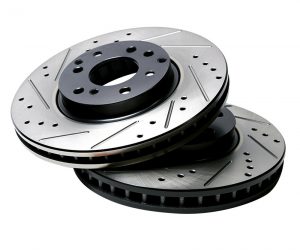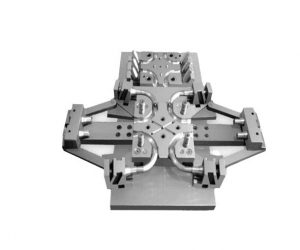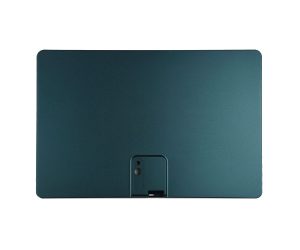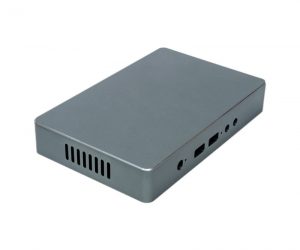In-Mold Decoration (IMD) injection molding transcends mere cosmetic enhancement; it's a transformative technology redefining the aesthetics and functionality of plastic products. This process, far from a simple decorative overlay, represents a paradigm shift in manufacturing, integrating design and production in a manner previously unattainable. Understanding its intricacies, advantages, and the crucial selection of a competent partner is paramount for leveraging its full potential.
IMD's core principle lies in the synergistic fusion of decorative film or sheet material with the plastic substrate during the injection molding process itself. This isn't a post-production embellishment; it's an intrinsic component of the manufacturing cycle. The resulting product boasts an unparalleled level of integration, where the decoration isn't merely applied, but becomes an inseparable part of the final form. This inherent unity significantly impacts durability, resistance to wear and tear, and the overall aesthetic integrity.
The process unfolds with meticulous precision. Initially, the decorative element – be it a complex multi-layered film or a meticulously crafted sheet – is precisely positioned within the mold cavity. The molten plastic is then injected, enveloping and fusing with the decorative layer under carefully controlled temperature and pressure. The result is a monolithic structure, seamlessly integrating form and function, a feat impossible with traditional post-molding decoration techniques. This integrated approach dramatically streamlines production, reducing lead times and associated costs.
The advantages of IMD are multifaceted and extend beyond mere visual appeal. Enhanced durability, resistance to abrasion, chemicals, and UV degradation are inherent benefits. Furthermore, the elimination of secondary decoration processes translates to significant cost savings and minimized waste. The potential for complex, multi-hued designs, impossible with conventional methods, opens avenues for unprecedented creative freedom. The inherent robustness and seamless integration also enhance the product's lifespan, reducing the environmental impact associated with premature failure and disposal.
The applications of IMD are remarkably diverse, spanning consumer electronics (imagine the intricate designs on high-end smartphones), automotive interiors (where durability and aesthetic appeal are paramount), and medical devices (demanding stringent quality and hygiene standards). Its versatility extends to virtually any application where a high-quality, durable, and aesthetically pleasing plastic component is required. The technology's adaptability is only limited by the designer's imagination and the capabilities of the chosen manufacturing partner.
Selecting the right IMD injection molding partner is not merely a matter of finding a supplier; it's about forging a strategic alliance. The ideal partner possesses not only the technological expertise and advanced equipment but also a proven track record of quality control, a deep understanding of the intricacies of the process, and a commitment to delivering exceptional after-sales support. A thorough assessment of their capabilities, including their design expertise, prototyping processes, and manufacturing infrastructure, is crucial for ensuring a successful collaboration and the delivery of superior products. The choice of partner directly impacts the success of your project; therefore, due diligence is paramount.
In-mold decoration (IMD) transcends the simplistic notion of mere surface ornamentation; it represents a paradigm shift in plastic component manufacturing. This sophisticated technique, a marriage of injection molding and advanced printing technologies, achieves a level of integration previously unattainable. Instead of applying decoration as an afterthought, IMD embeds the graphic directly within the molded part, creating a monolithic structure of unparalleled durability and aesthetic appeal.
The process commences with the meticulous creation of a decorative film – a substrate of polycarbonate, polyester, or other specialized material – bearing the intricate graphic design. This design, realized through high-precision printing methods such as offset or screen printing, can incorporate vibrant color palettes, complex textures, and even subtly nuanced haptic feedback. The film, a microcosm of the final product’s visual identity, is then precisely positioned within the injection mold cavity, a task often requiring sophisticated robotic automation to guarantee flawless alignment.
Injection molding ensues, a high-pressure ballet of molten plastic surging into the mold cavity. The plastic, a carefully selected resin compatible with the decorative film, envelops the graphic, creating a robust, inseparable bond. This fusion isn't merely superficial; it's a molecular embrace, resulting in a seamless, unified structure. Upon cooling and ejection from the mold, the resultant part showcases a decoration impervious to the ravages of abrasion, fading, or environmental degradation.
The advantages of IMD are manifold and compelling. The inherent durability of the integrated decoration eliminates the need for secondary processes, thus streamlining production and reducing costs. The design possibilities are virtually limitless, allowing for intricate logos, brand identifiers, and complex patterns, all rendered with exceptional precision and consistency. This surpasses the limitations of post-process decoration methods, which often suffer from variability and susceptibility to damage.
However, the elegance of IMD belies certain complexities. Material compatibility is paramount; the selection of film and resin must be carefully considered to ensure optimal adhesion and long-term performance. Furthermore, intricate part geometries can pose significant challenges, demanding specialized tooling and meticulous process optimization to maintain uniform decoration across the entire surface. The inherent precision required necessitates sophisticated quality control measures throughout the entire production lifecycle.
IMD's versatility finds expression across diverse sectors. From the sleek interiors of automobiles to the sophisticated interfaces of consumer electronics, the technology’s impact is undeniable. In applications ranging from medical devices demanding stringent hygiene standards to durable consumer goods requiring exceptional longevity, IMD delivers a superior solution.
In conclusion, IMD injection molding represents a significant advancement in manufacturing technology. Its ability to seamlessly integrate high-quality, durable decorations into plastic parts, coupled with its cost-effectiveness and design flexibility, positions it as a leading technology for the foreseeable future. Ongoing material science and automation advancements promise to further enhance its capabilities, pushing the boundaries of what’s possible in the realm of in-mold decoration.
What is IMD Injection Molding?
IMD injection molding, or in-mold decoration, is a cool way to add designs and labels to plastic items during their creation. Instead of sticking on decals later, this method prints graphics directly onto the plastic as it's being molded. This means you get a tough, good-looking part without needing any extra work afterward.
You can use IMD to make all sorts of designs on plastic stuff – think logos, pictures, patterns, even different textures and colors. And that's not all! It can also give plastic parts some smart features like touch sensors, buttons, and tiny lights.
This technique is super popular across lots of fields, from making gadgets we use every day to cars, kitchen appliances, and medical equipment. By using IMD, companies can make products that really pop and grab attention in a crowded market.
How Does IMD Injection Molding Work?
IMD injection molding involves the following steps:
- A pre-printed label or decorated film is inserted into the open mold cavity. The label or film can be held in place by vacuum ports, electrostatic charge, or other methods.
- The mold closes and plastic resin is injected into the cavity. The heat and pressure of the injection molding process bond the label or film to the plastic surface.
- The mold opens and the decorated plastic component is ejected. The label or film becomes an integral part of the plastic component.
IMD injection molding can use different types of labels or films, depending on the desired design and function. For example:
- Gravure-printed films: These are films that are printed by a high-speed gravure printing process. They can have up to seven layers of graphic color, plus a hard coat layer and an adhesion layer. Gravure-printed films can produce high-quality images and colors on plastic surfaces.
- Reel-to-reel films: These are films that are printed on a continuous roll of material. They can be fed into the mold cavity by a foil feeder that adjusts the registration of the film by optical sensors. Reel-to-reel films can enable high productivity and automation of the IMD injection molding process.
- In-mold labels: These are labels that are printed on paper or plastic substrates. They can have different shapes and sizes to fit the mold cavity. In-mold labels can provide a cost-effective and environmentally friendly option for IMD injection molding.
What are the Benefits of IMD Injection Molding?
IMD injection molding offers several benefits for both manufacturers and consumers, such as:
- Enhanced appearance: IMD injection molding can create vivid, detailed, and durable graphics on plastic surfaces that cannot be achieved by conventional methods like painting or printing. IMD injection molding can also create various effects like anti-glare, anti-fog, anti-microbial, matte, glossy, metallic, etc.
- Improved functionality: IMD injection molding can add electrical functions to plastic surfaces that can enhance the user experience and performance of the product. For example, IMD injection molding can integrate touch sensors, buttons, LEDs, displays, etc., without compromising the design or quality of the product.
- Reduced costs: IMD injection molding can eliminate the need for post-processing or additional printing of the plastic components. This can save time, labor, material, and energy costs for manufacturers. IMD injection molding can also reduce waste and emissions by using thin films or labels that only cover the desired areas.
- Increased durability: IMD injection molding can protect the graphics and functions on plastic surfaces from scratches, chemicals, UV radiation, abrasion, etc., by using hard coat layers or films. This can extend the lifespan and reliability of the product.
What are the Applications of IMD Injection Molding?
IMD injection molding can be used to create various products across different industries that require high-quality design and functionality on plastic surfaces. Some examples are:
- Consumer electronics: IMD injection molding can be used to create products like smartphones, tablets, laptops, cameras, headphones, etc., that have attractive designs and user-friendly interfaces on their plastic cases or components.
- Automotive: IMD injection molding can be used to create products like dashboard panels, instrument clusters, steering wheels, door handles, etc., that have decorative and functional features on their plastic surfaces.
- Home appliances: IMD injection molding can be used to create products like refrigerators, microwaves, washing machines, coffee makers, etc., that have stylish and durable designs and controls on their plastic parts or components.
- Medical devices: IMD injection molding can be used to create products like blood glucose meters, inhalers, syringes, etc., that have clear and accurate graphics and functions on their plastic surfaces.
How to Choose a Reliable IMD Injection Molding Partner?
IMD injection molding is a complex and specialized process that requires advanced technology, equipment, and expertise. Therefore, it is important to choose a reliable IMD injection molding partner that can meet your specific needs and expectations. Here are some factors to consider when choosing an IMD injection molding partner:
- Experience: Choose an IMD injection molding partner that has extensive experience and knowledge in the field of IMD injection molding. Check their portfolio of previous projects and see if they have worked with similar products or industries as yours.
- Quality: Choose an IMD injection molding partner that can deliver high-quality products that meet your design and functional requirements. Check their quality control systems and certifications and see if they comply with the relevant standards and regulations.
- Capability: Choose an IMD injection molding partner that has the capability to handle your project from start to finish. Check their production capacity, lead time, delivery options, and after-sales service and see if they can meet your expectations and deadlines.
- Communication: Choose an IMD injection molding partner that has good communication skills and customer service. Check their responsiveness, feedback, and support and see if they can understand your needs and preferences and provide you with satisfactory solutions.
IMD injection molding is a powerful technique that can enhance the appearance and functionality of plastic products. By choosing a reliable IMD injection molding partner, you can create high-value products that stand out from the competition.




